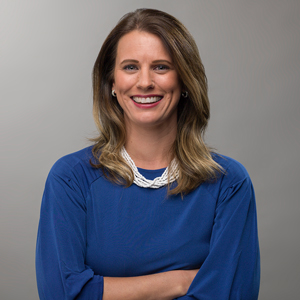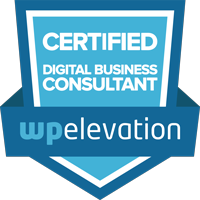Episode 11: The Case for Data Leadership with Tracy Van Solkema
Building on our previous conversation about CRM with Ashley Faison, in this episode we’re talking about data leadership with Tracy Van Solkema. Tracy is the Research and Data Services Specialist at the Grand Rapids Community Foundation. When it comes to the topic of using data to advance the work of your organization, you’d be hard-pressed to find a person more passionate about this topic than Tracy.
Why is a CRM or donor database important for a nonprofit or foundation?
- Shared institutional knowledge – ensures the documentation of important data and knowledge from long-time employees
- Less fear of organizational change – allows for easier staff transitions and keeps the work moving forward in someone’s absence, addressing the old ‘what happens if you’re hit by a bus?’ scenario
- Access to information – provides all staff access to the same information even if they are off-site or at a different office
- Workflow improvements – reminders and more can lead to more efficient processes
- Strengthens relationships – the data helps facilitate relationships and gives insights on how to engage donors and prospects. It’s the starting point to effectively creating a strategy for both fundraising and marketing
Tracy emphasizes CRM (Customer or Constituent Relationship Management technology) is a key differentiator. An Excel spreadsheet can work as a database just storing data. However, what it can’t do is manage relationships well. CRM goes to the next level, allowing an organization to manage relationships, analyze and report on data, and create data-driven insights.
Defining data and common data points to track
In this context, Tracy defines data the information you store about your donors, prospects, volunteers, and the data related to how they interact with your organization.
- Common Data Points:
- Biographical information – name, address, phone number, email address, gender, etc.
- How is the person connected to your organization?
- Gift history
- Less Common Data Points:
- How was a gift solicited?
- Was a gift in response to a specific appeal?
- How was the gift made (mailed check or online)?
- Has the donor attended recent events?
- Interactions with staff and the qualitative content of those interactions. Every donor has a story!
How does an organization decide what data to track?
Tracy recommends ensuring your basic biographical data is tracked consistently as a starting point. This means ensuring you have data entry processes and procedures in place for what needs be entered and how it is entered in your CRM.
When it comes to tracking additional data, Tracy starts with the end in mind. She asks, how will we use this data? Will it inform our fundraising or marketing strategy? If not, maybe it’s not necessary. She also suggests not wasting time tracking a data point you can get from other data (e.g. tracking current donor when this information is obvious by their gift history).
Tracy lives by a quote hanging above her desk: “One key component to fundraising success is to know that information is power and that power resides in your database!”
An example of using the power of your database is using your data to segmenting appeals. Use your data to create appeals with messaging specific to the audience. Segmenting may be based on past gift history, relationship to the organization (i.e. volunteer, board member, etc.), philanthropic interest, or age. On the topic of age, Tracy provides great examples and shares how to access this important information.
A relationship endowment—Tracy’s philosophy about database management
Tracy thinks of the database as an endowment. As data is added to the database, the information and the depth of information grow in perpetuity, and through this growth, relationships can flourish for the organization now and into the future.
When you think of your database as your “relationship endowment,” you can see the value of maintaining it and monitoring it with high standards, just as you would a financial endowment. The people who manage and oversee your relationship endowment should be well trained, and your board and leadership should take interest in this endowment. Your relationship endowment is the foundation that backs your personal connections over time.
What is data leadership?
Embracing the management and use of data across an entire organization starts with leadership.
Tracy says that four key things make up data leadership:
- Real buy-in: The shift in thinking about data is not just about one person or department at your organization. It is a shift in mentality, starting with leadership and trickling down to all parts of the organization. If data leadership does not start from the top, it does not work. This means not just saying or understanding that data is important, but doing something about. Often what this looks like is empowering those who understand and are trained to use the database to make decisions about the data. It can also include leadership asking questions about data and using it for benchmarking and understanding your work.
- Embracing change: Technology change can be difficult, especially the process of converting to a new CRM or putting procedures in place that make it so people have to make more time to record data properly. The biggest mistake Tracy sees people make when choosing a new CRM is trying to use the new system the same way the old one was used. By not embracing change, an organization might miss out on new, innovative or more efficient ways of doing things.
- Investing in data collection and data maintenance: It takes time to manage and keep data clean, and create policies for how data is used and stored. The data will be used to help tell a story, manage relationships, and analyze, evaluate and benchmark. An investment of time, dollars, or additional and qualified staff to do the work may be needed.
- Investing in people: The stewardship, cultivation, or fundraising strategy for every donor starts with the data and the person that manages that data. Data input, management, and analyzation is not a task that should be given to just anyone. Invest in a seasoned, knowledgeable and trained staff to manage data. Training is essential—No one comes out of college knowing how to manage a nonprofit CRM. Staff should be empowered to learn about the evolving landscape of how we can better use the data and be given the time and resources to manage the data, and most importantly, they should have a seat at the table. People who manage/analyze the data should be involved in strategy and decision-making., and be part of meetings with marketing and development.
Tips for organizations getting started with data:
- If you are a leader:
- Embrace data leadership
- Use your data to make decisions
- Ask questions about data
If you are a database manager:
- Data that isn’t clean, it isn’t valuable
- Create practices, policies, and procedures in place to ensure clean data
- Create standards and stick with them
If you are a development/fundraising person:
- Record your interactions with donors
- Your relationship with the database manager is really important.
- Bring your database person in your strategy meeting. They can provide a lot of value! Talk to them about your donor meetings and work together to create good strategy
About Tracy Van Solkema bCRE-Pro
 Tracy Van Solkema is the Research and Data Services Specialist at the Grand Rapids Community Foundation. In this role, she administers the Foundation’s research activities on prospective donors, manages and analyzes the database to inform development strategy, leads database training and collaboration with other departments and manages annual giving activities to help raise funds to support the Community Foundation’s unrestricted endowment.
Tracy Van Solkema is the Research and Data Services Specialist at the Grand Rapids Community Foundation. In this role, she administers the Foundation’s research activities on prospective donors, manages and analyzes the database to inform development strategy, leads database training and collaboration with other departments and manages annual giving activities to help raise funds to support the Community Foundation’s unrestricted endowment.
She is a bCRE-Pro (Blackbaud Certified Raiser’s Edge Professional) a designation she earned and has maintained since 2016. Tracy has over fifteen years of experience in the nonprofit sector in the areas of philanthropy, arts, higher education and human services. Tracy truly enjoys helping nonprofit organizations build meaningful relationships and make successful data-driven decisions. She has a passion for sharing a vision for data leadership and best practices for how Community Foundations can use Raiser’s Edge to cultivate donors and create strong relationships with various constituencies. She has led conference sessions on relationship and database management in 2017 and 2018 at Blackbaud’s premier tech gathering for social good.
Tracy has a Bachelor of Science degree in Public Relations and Advertising from Grand Valley State University.
Find Tracy at:
Grand Rapids Community Foundation
LinkedIn



